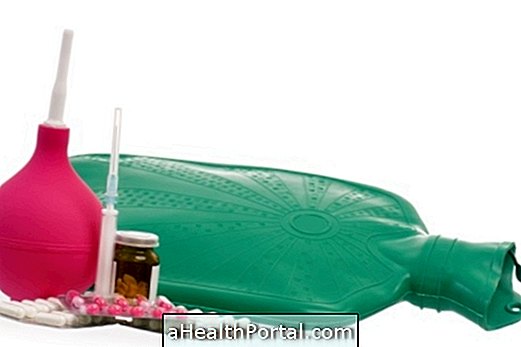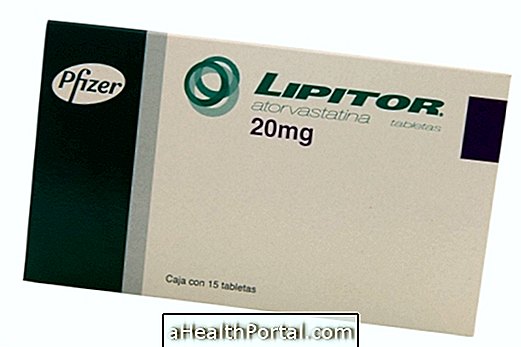Intestinal lavage is a natural method which consists of inserting fluids into the intestine to remove residues. This procedure should be performed by a health professional, however it can also be done at home very carefully, since it presents some risks.
Some people do gut lavage to eliminate toxins, resulting from eating, which can cause tiredness, headache, weight gain and decreased energy and vitality. However, it can also be used to do exams, such as a colonoscopy, for example.

What are the benefits
Although there are no studies to prove this, people who resort to intestinal lavage intend to lose weight, eliminate toxins and balance the intestinal flora in order to promote improvements in the digestion and immune system, reduce the risk of colon cancer and increase vitality .
In addition, intestinal lavage may also be recommended for people who need to do bowel exams, such as colonoscopies or retoscopies. Find out what it is for and how the colonoscopy is done.
How to do intestinal lavage
The intestinal lavage can be done by a health professional in a hospital or at home with an enema or a kit of your own. Learn how to make an enema at home step-by-step.
Generally, the intestinal lavage is made with specific products that are sold in the pharmacy, such as enemas with remedy, already ready for use or devices in the form of pear where can be inserted warm water, for example. When these products are inserted into the anus, after a few minutes they are again eliminated along with the residues and content present in the rectum and the final part of the large intestine. Here's how to use an enema at home.
Hydrocolonotherapy is a type of intestinal lavage in which warm filtered and purified water is inserted through the anus, allowing the elimination of accumulated feces and toxins from the intestine, which is often used to combat constipation, and is also often indicated in the preparation for surgeries. This procedure is different from the enema because the enema only eliminates the feces from the initial portion of the intestine, while the hydrocolonotherapy does a complete bowel cleansing. Learn more about this procedure.

Possible risks and side effects
The intestinal lavage presents some risks, such as:
- Dehydration, because the removal of waste is accompanied by fluids, which can cause, in extreme cases, renal failure;
- Electrolyte imbalance, because lavage of the intestine can cause changes of electrolytes in the body, such as potassium and sodium, which can lead to loss of consciousness and renal failure;
- Infection because intestinal lavage can facilitate the entry of bacteria through the material used and because it can remove the good bacteria from the intestine and can cause an imbalance of the intestinal flora;
- Perforation of the intetsino, podenco cause symptoms like fever, pain, shivers and nausea and even cause death, so at the first signs it is very important to seek emergency medical.
In addition, some of the side effects that can be caused by an intestinal lavage are vomiting, nausea, dizziness and altered absorption of some medications.
Tips for a Safe Bowel Wash
In order to perform a safe intestinal lavage, you should talk to your doctor, who can explain how to do the procedure or refer the person to a health care provider who does so, drink plenty of fluids to avoid dehydration.
In addition, it is also very important to preferably use new or sterile material.






















